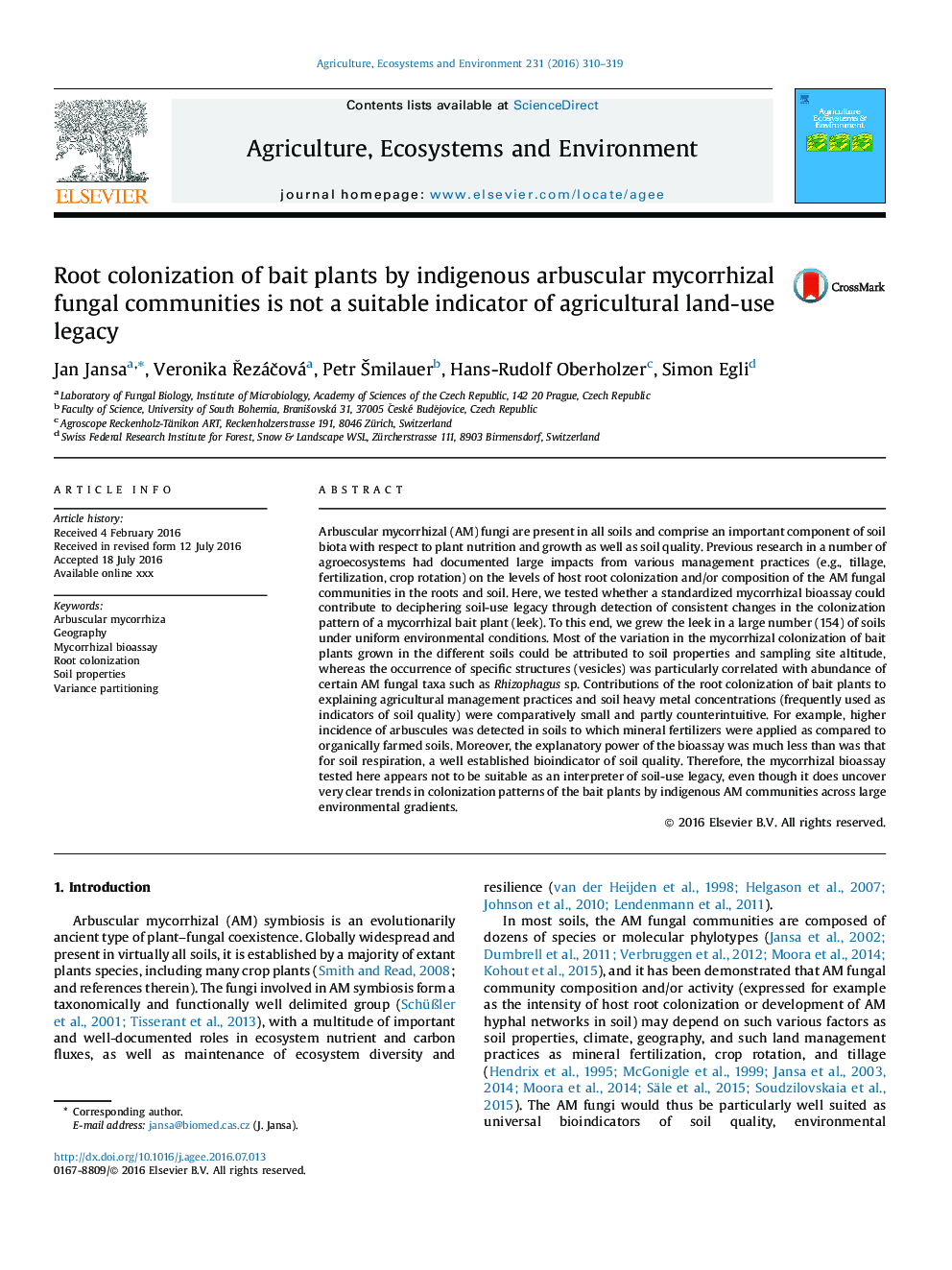| کد مقاله | کد نشریه | سال انتشار | مقاله انگلیسی | نسخه تمام متن |
|---|---|---|---|---|
| 8487368 | 1552021 | 2016 | 10 صفحه PDF | دانلود رایگان |
عنوان انگلیسی مقاله ISI
Root colonization of bait plants by indigenous arbuscular mycorrhizal fungal communities is not a suitable indicator of agricultural land-use legacy
ترجمه فارسی عنوان
کلونیزاسیون ریشه گیاهان طعمه با جوامع قارچی میکوریزا بومی، نشانگر مناسب ارث زمین کشاورزی است
دانلود مقاله + سفارش ترجمه
دانلود مقاله ISI انگلیسی
رایگان برای ایرانیان
کلمات کلیدی
میکوریزا آربوسکولار، جغرافیا، زیست سنجی مایکوریزا، استعمار ریشه، خواص خاک، واریانس پارتیشن بندی،
موضوعات مرتبط
علوم زیستی و بیوفناوری
علوم کشاورزی و بیولوژیک
علوم زراعت و اصلاح نباتات
چکیده انگلیسی
Arbuscular mycorrhizal (AM) fungi are present in all soils and comprise an important component of soil biota with respect to plant nutrition and growth as well as soil quality. Previous research in a number of agroecosystems had documented large impacts from various management practices (e.g., tillage, fertilization, crop rotation) on the levels of host root colonization and/or composition of the AM fungal communities in the roots and soil. Here, we tested whether a standardized mycorrhizal bioassay could contribute to deciphering soil-use legacy through detection of consistent changes in the colonization pattern of a mycorrhizal bait plant (leek). To this end, we grew the leek in a large number (154) of soils under uniform environmental conditions. Most of the variation in the mycorrhizal colonization of bait plants grown in the different soils could be attributed to soil properties and sampling site altitude, whereas the occurrence of specific structures (vesicles) was particularly correlated with abundance of certain AM fungal taxa such as Rhizophagus sp. Contributions of the root colonization of bait plants to explaining agricultural management practices and soil heavy metal concentrations (frequently used as indicators of soil quality) were comparatively small and partly counterintuitive. For example, higher incidence of arbuscules was detected in soils to which mineral fertilizers were applied as compared to organically farmed soils. Moreover, the explanatory power of the bioassay was much less than was that for soil respiration, a well established bioindicator of soil quality. Therefore, the mycorrhizal bioassay tested here appears not to be suitable as an interpreter of soil-use legacy, even though it does uncover very clear trends in colonization patterns of the bait plants by indigenous AM communities across large environmental gradients.
ناشر
Database: Elsevier - ScienceDirect (ساینس دایرکت)
Journal: Agriculture, Ecosystems & Environment - Volume 231, 1 September 2016, Pages 310-319
Journal: Agriculture, Ecosystems & Environment - Volume 231, 1 September 2016, Pages 310-319
نویسندگان
Jan Jansa, Veronika ÅezáÄová, Petr Å milauer, Hans-Rudolf Oberholzer, Simon Egli,
